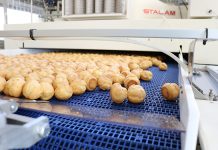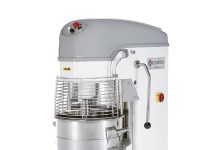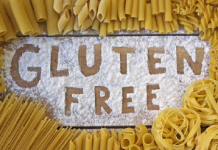 Positive consumers perceptions of high quality, taste and health value combine with ease of preparation of fresh filled pasta. In fact, the appeal of this product on nowadays consumers is based on many assets: easy and very quick to cook (from 1 to 5 minutes); long shelf life (up to 2-3 months); variety of shapes and stuffings; original recipes that combine authenticity, tradition, and regional origin; more recently, healthy options are available (variety of vegetables and fish based stuffings, wholemeal grain pasta, etc.). For these reasons consumers are willing to pay premium prices for fresh filled pasta, starting from around 4 €/kg for the bottom range products (3-4 times more than dry pasta) up to 20 €/kg, with average supermarket prices around 10 €/kg. Competition in the sector has been fierce in the last years, not only between manufacturers but also for the introduction of supermarket store brands. With the recent economical crisis, consumers loyalty to brand has diminished: the best combination of quality and price is pursued instead. Italy is the main consumer of pasta per capita (as shown in the table), and it is also the Country with the highest concentration of factories producing pasta and the relevant high technology machinery.
Positive consumers perceptions of high quality, taste and health value combine with ease of preparation of fresh filled pasta. In fact, the appeal of this product on nowadays consumers is based on many assets: easy and very quick to cook (from 1 to 5 minutes); long shelf life (up to 2-3 months); variety of shapes and stuffings; original recipes that combine authenticity, tradition, and regional origin; more recently, healthy options are available (variety of vegetables and fish based stuffings, wholemeal grain pasta, etc.). For these reasons consumers are willing to pay premium prices for fresh filled pasta, starting from around 4 €/kg for the bottom range products (3-4 times more than dry pasta) up to 20 €/kg, with average supermarket prices around 10 €/kg. Competition in the sector has been fierce in the last years, not only between manufacturers but also for the introduction of supermarket store brands. With the recent economical crisis, consumers loyalty to brand has diminished: the best combination of quality and price is pursued instead. Italy is the main consumer of pasta per capita (as shown in the table), and it is also the Country with the highest concentration of factories producing pasta and the relevant high technology machinery.  Both products (pasta and pasta machinery) boast high exportation levels. It is estimated that, worldwide, 1 out of 4 pasta servings is made in Italy. Looking at the Italian internal market of fresh filled pasta, there is a market leader sided by a few other manufacturers of national relevance; the remainder of competitors are small local manufacturers with production plants little more than artisanal. Different filled pasta categories can be distinguished:
Both products (pasta and pasta machinery) boast high exportation levels. It is estimated that, worldwide, 1 out of 4 pasta servings is made in Italy. Looking at the Italian internal market of fresh filled pasta, there is a market leader sided by a few other manufacturers of national relevance; the remainder of competitors are small local manufacturers with production plants little more than artisanal. Different filled pasta categories can be distinguished:
– Dry filled pasta. It has the advantage of a long shelf life even in the absence of refrigeration, but its market share is not nationally relevant: in fact about 95% of this product is exported.
– Fresh filled pasta. It has the strongest appeal on private consumers. Pasteurization processes and MAP introduction allow these products to have a long shelf life (some months) despite their high humidity content.
– Precooked and/or frozen filled pasta. They are mainly produced for the Ho.Re.Ca sectors. The precooking (often performed through continuous cookers) not only allow a faster final preparation step, but it is also an important sterilization and stabilization step for the product.
– Canned filled pasta. It is quite popular in some European Countries, but its market share is negligible in Italy.
 Fresh/chilled pasta is increasing in popularity especially in Europe, accounting for 27% of total pasta consumption. Most pasta categories are forecasted to continue growing in the E.U. during the next five years, with the exception of canned pasta. Several factors should drive fresh pasta sales, as opportunities for pasta meals are on the rise. Many consumers prefer to cut the cost of dining out, moving to cooking and entertaining at home to save money: convenience and ease of preparation are the main features of these pasta products. Many manufacturers efforts, like inventing new recipes and packaging formats for chilled/fresh products, and the introduction of value added product formulations, will create demand in the future. Also the increasing number of single or divorced person households will boast sales of value added easy to prepare products. Furthermore, the considerable potential for innovation still to be exploited in this sector can drive further market expansion: eating habits are changing to emphasize not only convenience but also freshness, variety and healthiness, all of which can be offered by fresh filled pasta. In fact, the health conscious eating trend has also affected sales of pasta, increasing demand for whole grain pasta and stuffings made with fresh and healthy ingredients. Other health oriented options that might be taken into account by manufacturers are fortified and enriched formulations. Looking into the fresh filled pasta production process, full automation and informatics integration has reached high levels in this sector. Production speed is usually around 600-900 kg/h, but it can reach as high as 1500 kg/h in large fully automated production plants. The main production steps, highlighting the critical points for product final quality, are now described.
Fresh/chilled pasta is increasing in popularity especially in Europe, accounting for 27% of total pasta consumption. Most pasta categories are forecasted to continue growing in the E.U. during the next five years, with the exception of canned pasta. Several factors should drive fresh pasta sales, as opportunities for pasta meals are on the rise. Many consumers prefer to cut the cost of dining out, moving to cooking and entertaining at home to save money: convenience and ease of preparation are the main features of these pasta products. Many manufacturers efforts, like inventing new recipes and packaging formats for chilled/fresh products, and the introduction of value added product formulations, will create demand in the future. Also the increasing number of single or divorced person households will boast sales of value added easy to prepare products. Furthermore, the considerable potential for innovation still to be exploited in this sector can drive further market expansion: eating habits are changing to emphasize not only convenience but also freshness, variety and healthiness, all of which can be offered by fresh filled pasta. In fact, the health conscious eating trend has also affected sales of pasta, increasing demand for whole grain pasta and stuffings made with fresh and healthy ingredients. Other health oriented options that might be taken into account by manufacturers are fortified and enriched formulations. Looking into the fresh filled pasta production process, full automation and informatics integration has reached high levels in this sector. Production speed is usually around 600-900 kg/h, but it can reach as high as 1500 kg/h in large fully automated production plants. The main production steps, highlighting the critical points for product final quality, are now described.
1) Pasta ingredients are dosed, usually taking advantage of a PLC system; solid ingredients (flours, gluten, any colouring powder as spinach or tomato, etc.) are usually previously treated by a centrifuge pre-mixer. To ensure pasta film resilience to contact with stuffing and to mechanical stress during forming, a proportion of durum wheat flour or gluten are added to soft wheat flour; for other pasta categories, e.g. dry filled pasta, often only durum wheat flour is used.
2) Solid ingredients are then mixed into a kneader together with liquid ingredients (often 100% eggs), until an homogeneous and firm pasta dough is obtained.
3) Pasta dough is sent to extruding rolls able to flatten it into long sheets of pasta. Sheet thickness varies depending on the final product desired characteristics: thin pasta will give a product faster to cook and generally more appreciated thanks to the generous stuffing to pasta weight ratio, but on the other hand thicker pasta will be more resilient to mechanical and thermal stresses.
4) Inside a separate mixer, the stuffing is prepared, mixing a variety of ingredients depending on the final product filling (meat or fish, ricotta and/or cheeses, vegetables, mushrooms, nuts, flavourings, etc.). Preservatives may be necessary depending on the stuffing final water activity (aw) and product final treatments (pasteurization, MAP, etc.). Stuffing and pasta aw have to be as close as possible to avoid product spoilage during shelf life, and stuffing texture must be adequate for machinery dosing and filling it inside the pasta.
5) Pasta sheet is then sent to forming machines, that can be single-sheet or double-sheet: the first are used for tortellini, tortelloni, bundles and similar, while the latter are common for ravioli shape filled pasta. In the first case, stuffing is pressed inside the forming pasta shape, while in the latter case, stuffing is dosed on the surface of the bottom pasta sheet and then covered by the second sheet. In both cases, the filled pasta is closed by pressure in specific points (e.g. by automatic multi-head pincers in the case of tortellini and tortelloni) and pasta remainders are cut away, often reused in following dough. Ready filled pasta pieces are then transported through vibrating conveyor belts, to prevent pieces to stick together.
6) Thermal treatment, usually pasteurization, is necessary to microbiologically stabilize the filled pasta. It can be performed by spraying pasta pieces with hot vapour through nozzles, or dipping pieces in hot water. Hot air drying is the next step, which is critical for product shelf life, therefore conveyors speed has to be synchronized to ensure thorough product dryness. Finally the product is chilled. The whole process is automatic and continuous, on conveyor belts.
7) Packaging, which again is very often completely automated, can be performed through multi-head scales. The most common packagings for fresh filled pasta are made of plastic polymers such as OPP or LDPE/PET. Usual pack sizes go from 250-350 g for the retail sector up to 10 kg sacs for Ho.Re.Ca. In the case of fresh filled pasta, often vacuum or MAP are applied (common gas mixtures are nitrogen 0-30% and carbon dioxide70-100%): in those cases gas tight plastic polymers are necessary. After packaging, the product might undergo a final thermal treatment to further microbiologically stabilize the product and extend shelf life: in this case, a plastic polymer suitable for high temperature treatments has to be chosen.



